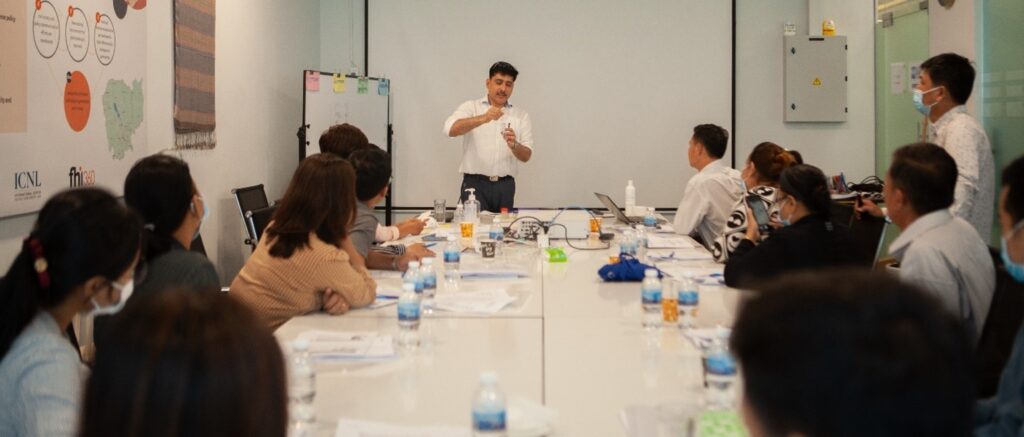
According to the World Health Organization, in 2022, tuberculosis (TB) “remains globally a leading cause of death by a single infectious agent, only after coronavirus disease (COVID-19), and causes almost twice as many deaths as HIV/AIDS” (WHO Global Tuberculosis Report, 2023).
In response to the TB crisis, the FHI 360 Emerging Infectious Disease and Health Security (EIDHS) division provides support to partners as well as thought leadership in TB prevention, detection, and response. This involves sharing our extensive experience and expertise in implementation science related to TB and our innovations, especially in diagnostics. We also leverage and build on our collaborations and relationships with key stakeholders across Africa and Asia.
We spoke to Sandeep Meharwal, EIDHS Technical Director of Diagnostics, about the significance of the impact of TB worldwide and the innovations being developed to curb its spread. He was recently invited to speak as a panelist for a TB diagnostics symposium organized by Roche at The Union World Conference on Lung Health 2023, the largest lung conference in the world. This conference was attended by scientists, health ministers, industry representatives, and other TB advocates and practitioners.
What is your expert opinion about the future of prevention, detection, and response to diseases and illnesses discussed at the conference?
This is a big moment for TB diagnostics, as many sensitive screening and diagnostic tests are ready to hit the market. This could help make TB diagnosis quicker and more accurate, which will lead to the correct treatment for patients. The latest one is a portable handheld X-ray device which provides very sensitive screening. We also have Truenat, a near point-of-care (POC) test, along with other POC tests now in the pipeline. The USAID-supported Infectious Disease Detection and Surveillance (IDDS) project presented the results and success of introducing Truenat technology in Bangladesh, which is part of USAID’s Introducing New Tools Project (iNTP) in collaboration with the StopTB Partnership. So, detection is getting more sensitive and new technologies are allowing for care closer to the patient.
For TB prevention, advances include infection prevention in hospitals, such as new and better-built buildings equipped with mechanical or cross-ventilation, as people are becoming more aware that TB wards and TB clinics should not be overcrowded in order to avoid any unnecessary exposure to others, especially immunocompromised individuals. We are also hoping to have an effective vaccine in the near future.
For TB response, there are breakthroughs in shortening the treatment duration significantly. The multi-drug-resistant TB (MDR-TB) treatment regimen has been reduced from a 24-month course to a six-to-nine-month course, and routine TB treatment has been reduced to four months down from six to nine months, with more trials ongoing that could further reduce treatment duration to two months. This will further improve treatment adherence and reduce the loss to follow-up. The all-oral treatment is much more convenient for the patients compared to taking hundreds of injections.
In your opinion, where should additional TB investments be focused?
I would say to focus on the equity gaps, which persist. Vulnerable populations—migrants, minors, slum dwellers, prisoners, and others who are not in the mainstream of society—are at increased risk of contracting TB, which is one of the main issues. Countries should focus on funding and investment to ensure that high-quality care is accessible and affordable to everyone in need.
Stigma is another issue in some communities that prevents people from seeking care. It’s sad to say that in the twenty-first century, the stigma of TB persists. Civil society can play a major role in increasing awareness about TB and eliminate any stigma around it.
At the second United Nations High-Level Meeting on TB in 2023, stakeholders made a commitment to “combat inequalities, and to eliminate all forms of TB-related stigma, discrimination, and other human rights barriers and violations.”
As I said in the beginning, this is an exciting time for diagnostic people like me to see a rich pipeline for innovative screening and diagnostic tools. Immediate investment is needed to get the right product out in the field for diagnosing TB quickly and accurately. I’m optimistic that, together, we can end TB.
